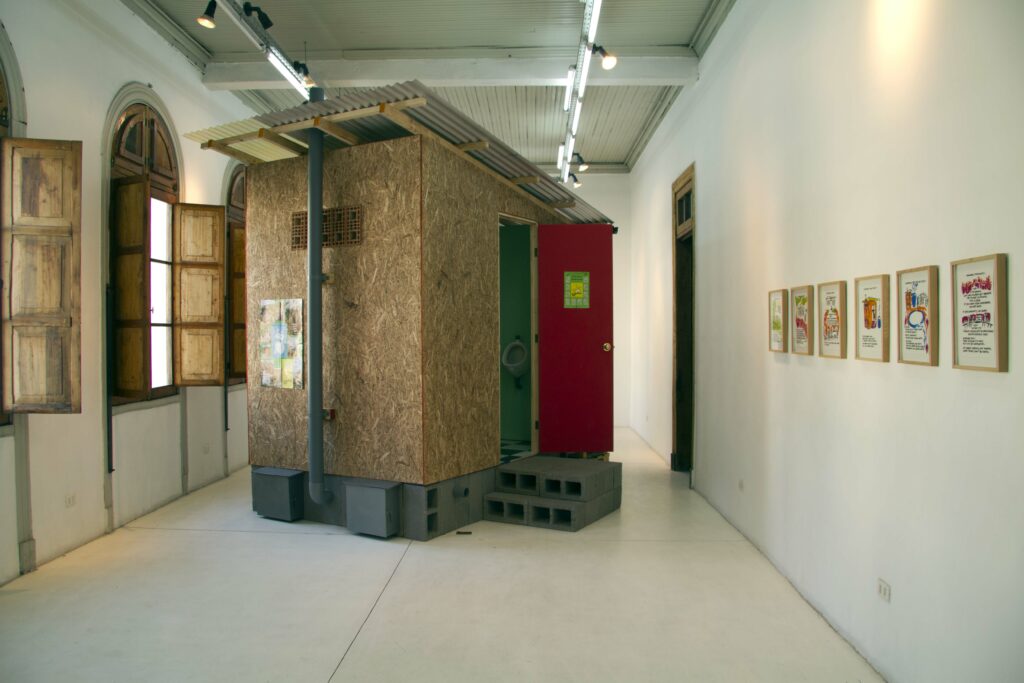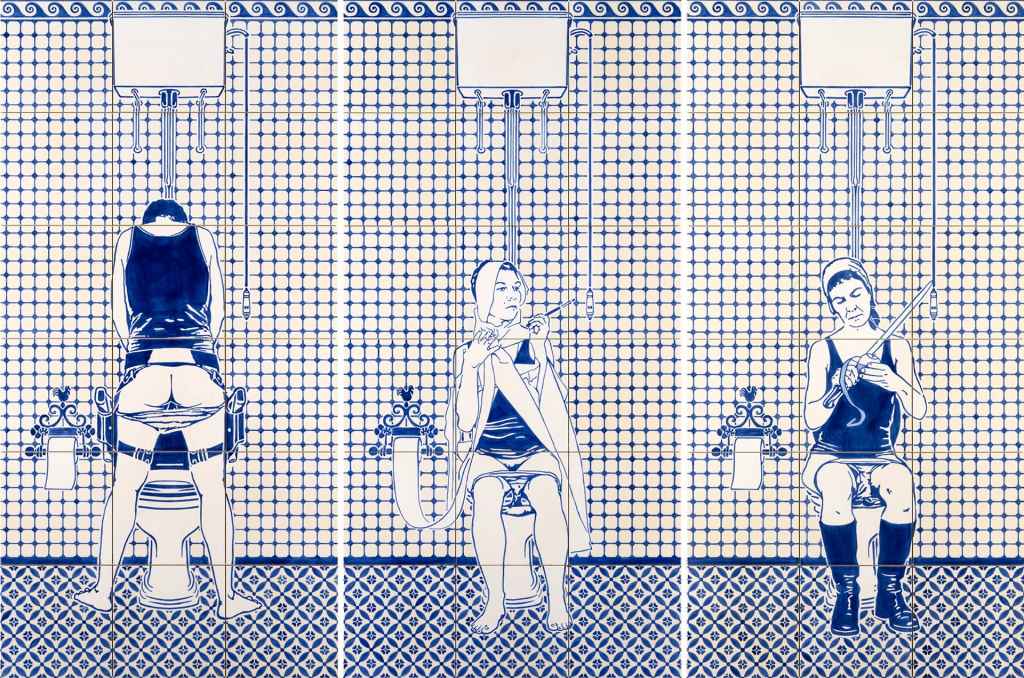The provocative power of Toilet Art
With controversial works in a variety of media, artists have always pushed boundaries and challenged social standards. Bodily functions and toilet-related art provoke the strongest reaction when it comes to taboo subjects. By including toilets and urination in their installations and sculptures, a number of modern artists have sparked interest, controversy, and discussion.
Marjetica Potrč is a Slovenian architect and artist who works out of Ljubljana. Interdisciplinary initiatives, research, case studies in architecture, and drawings are all a part of Potrč’s activity. Her work captures and interprets contemporary architectural practices, including how people interact and use water and energy infrastructure. She is particularly interested in social architecture and the collaboration between communities and governments that might result in more robust and resilient cities. She has emphasized the connection between human society and nature in later initiatives and fought for the rights of nature.
Large-scale gallery installations by Potrč, which she refers to as “architectural case studies”, are a distinctive technique that have long been essential to her works. She refers to these homes as “theatrical objects,” but they actually represent actual architectural techniques as they relate to political, social, economic, and environmental concerns. Each time a work is cited, the real situation is depicted in a black-and-white documentary photograph as part of the supporting evidence.
Caracas: Dry Toilet (2003-19), is the 9th version of a waterless toilet created for dry zones. This appealing installation is inoperable. The key is to separate the feces from the pee (which runs to the ground and makes the mixture smell unpleasant) before collecting them for composting. The design is the result of local collaboration, in this case with the people of La Vega barrio in the Dominican Republic. The exhibition was at the Nordenhake Gallery.

Some of the most astonishing contributions to German contemporary art can be found in Andreas Slominski’s creations. He mostly produced sculptures with lower dimensions in the early 1990s, but in more recent years, he has switched to producing installations with a greater size. Slominski has always been interested in having a direct conversation with the viewer and exploring concepts related to art and how it is perceived. His so-called “traps” are ridiculous-appearing baits that straddle the line between sculpture and practical product. He was motivated by the sculptural elements he noticed in a vole trap. These can be seen as observations of the alluring and deceiving qualities of art.
In Slominski’s universe, which also features bicycles, windmills, found objects, and unconventional materials, clever traps are just one of many elements. By placing these commonplace items in an artistic setting, he changes them in the tradition of Marcel Duchamp’s readymade, exposing the ways in which perception and expectation shape how we view things. In keeping with his satirical approach, he included paint and classical reliefs into his practice in 2006. Traditional painterly subjects were swapped out for kitschy motifs and color schemes, and exquisite marble was typically connected with these forms.
2016 release from Andreas Slominski, “Pissoir mit Korken” at Galerie Neu at the Art Berlin fair are dysfunctional urinals that are a surefire way to make a Duchamp allusion, but Andreas Slominski also calls up his own stream of “trap” works. In these pieces, however, liquid is imprisoned rather than an animal, unless there’s a fly in there. Perversely, the cork also suggests that there might be a potable product.

Iman Issa is an Egyptian multidisciplinary artist whose work explores the influence of display on academic and cultural institutions in general.
Since 2001, Iman Issa has been creating art using a variety of media, such as text, sculpture, video, and photography. As Issa navigates through history, language, and political and civic duty, memory and familiarity infuse her work.
The contents of the Proposal for an Iraq War Memorial include found photographs and film of Baghdad, news reports about the conflict, and snippets from the 1940 Hollywood film The Thief of Baghdad. The voiceover narration was also created and spoken by the artist. The narrator’s nonchalant reaction to the frightening images in the video cleverly alludes to the plight of the media consumer in an era of information overload. The impartial yet implicated narrator used by Issa serves to undermine the voice’s power.

German-born artist Dana Widawski, who resides in Berlin, works mostly in sculpture, porcelain, ceramics, installation, drawing, animation, and conceptual art.
Dana Widawski first finished an apprenticeship as a painter in the field of advertising design. From 1995 to 2000, she pursued a degree in textile design at the Burg Giebichenstein Academy in Halle. At the Berlin University of the Arts, she earned a Master of Arts after completing graduate studies there from 2000 to 2001 and a degree in Art in Context from 2004 to 2006.
‘Artist’s Rest I – III’ 2014 is a self-portrait on kitschy ceramic tiles, making it practical – as well as thematic – to install them in the room least likely to have art already. There one can contemplate Widawski trying to discover herself as she takes the piss out of any remaining notion of artists as higher beings. The exhibition was displayed at Art Mur in the Positions fair.





